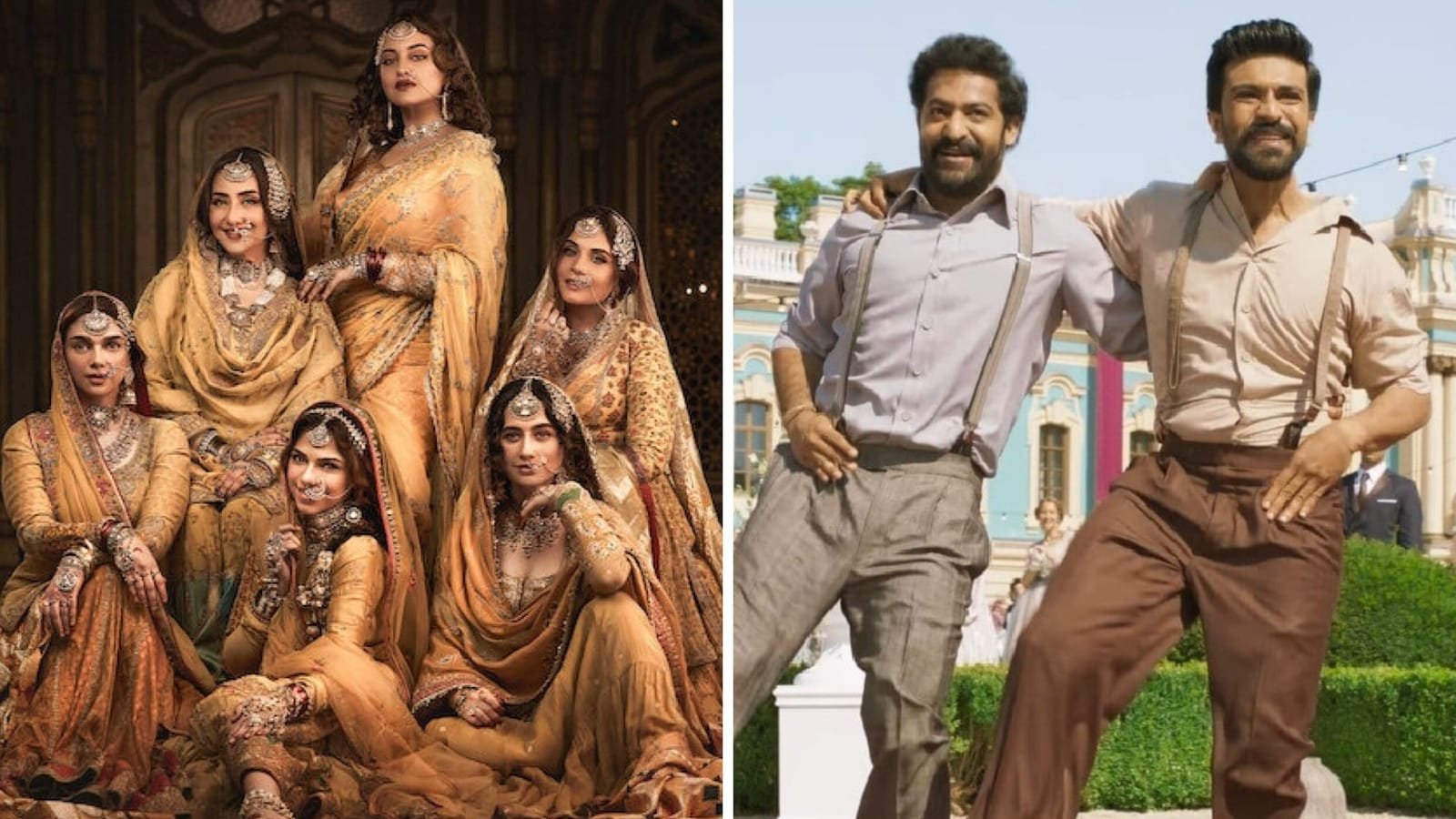Will Heeramandi be the next RRR? Global success makes Bhansali’s series cut across languages, cultures, criticisms | Web Series ullu-web-prime.com
When Sanjay Leela Bhansali’s debut show Heeramandi: The Diamond Bazaar released on Netflix India, it polarised the audience back home. There were several takers, but also enough critics who called out the show for its historical inaccuracy and asked if beauty is enough for any Indian piece of entertainment to pass muster. Engagement numbers followed soon, and Heeramandi turned out to be the most viewed Indian series on Netflix in its first week. It also entered the Top 10 in 43 countries, particularly where it was dubbed in the local languages. (Also read: Sanjay Leela Bhansali’s debut web show Heeramandi becomes most-viewed Indian series on Netflix)

Oscar-winning Parasite director Bong Joon-Ho may have famously called subtitles the ‘one-inch barrier’ to crossing over, but dubbing still goes a long way in making historically specific yet universally resonant stories like Heeramandi to proliferate across languages and cultures. Dubbing the show in 13 languages, including 8 foreign languages, has helped it to enter the Top 10 in countries as diverse as Indonesia, Malaysia, Singapore, Thailand, France, Germany, Bahrain, Egypt, the UAE, Saudi Arabia, Jordan and Iraq.
“This overwhelming response reaffirms our belief that Sanjay Leela Bhansali’s art has global appeal and fans beyond the Indian diaspora around the world. By dubbing in 13 languages, including 8 foreign languages, we want everyone to experience his maiden series, packed with his signature style, captivating performances, strong women characters, opulent set designs and costumes along with a bespoke album. The superlative reception reaffirms our collective belief in the show’s universal appeal,” says Monika Shergill, Vice-President, Content at Netflix India. “It’s Sanjay Leela Bhansali’s passion project he has held close to his heart for 14 years. So he definitely was very interested and involved in ensuring that the story reaches the widest audience and we strongly backed that vision,” she adds.
Indian story, universal themes
Bhansali is no stranger to crossovers. His 2002 period drama Devdas premiered at Cannes Film Festival and his last directorial feature, Gangubai Kathiawadi (2022), performed exceptionally well in Thailand. Which is why dubbing artist Sopita Rangsiyothai, who voiced Mallikajaan (Manisha Koirala’s character) in Thai, jumped at the opportunity to make Bhansali’s new story accessible to her countrymen. “I feel historical films across countries are interesting. People tend to care a lot about the past and the future due to the enjoyment of exploration,” she tells us.
Sahil Vaid, Indian actor who dubbed for Ashfaq Baloch in English, says Heeramandi seamlessly bridges the gap between today’s youth and challenges of the past. “The world felt familiar because I’ve encountered it in the stories by my grandparents who happen to be from Lahore. I voiced for Ashfaq in English, and I believed I saw my father in him. Every father is alike, that’s the beauty of fatherhood. I think it will resonate with all father-son relationships out there,” he adds.
Another dubbing artist, Stephanie Lafforgue, who voiced Mallikajaan in French, echoes the belief that Heeramandi being set in another place and another era is more of an asset, than a vessel of alienation. “It provides an alternate perspective of the world and women from a different region and time period,” she says. Katharina Spiering, who dubbed for Fareedan (Sonakshi Sinha’s character) in German, agrees that the colonial histories of India and Germany are spiritually linked. “It’s opulently filmed, takes us to another world and yet deals with themes that are familiar to us all — love, the desire for power, dealing with betrayal, and last but not the least, female solidarity and freedom,” she lists out.
Pan-India phenomenon
Tales on India’s freedom struggle have often found global resonance, from Ashutosh Gowariker’s 2001 period cricket drama Lagaan (which was nominated for the Best Foreign Film at the Academy Awards) to SS Rajamouli’s RRR, which scored an Oscar and a Golden Globe last year for its thumping anthem of rebellion, Naatu Naatu. RRR also found a new lease of life — and much-deserved global recognition — upon its release on Netflix. The streaming giant thus left no stones unturned to strategically position Heeramandi’s music, composed by Bhansali himself. The songs were even dubbed in Tamil and Telugu to make Heeramandi a true-blue pan-India phenomenon, although it’s set completely in a present-day Pakistan locality.
“As the narrative is set in the northern regions of our country (India in pre-Partition era), it was crucial for us to maintain the original spirit of the songs while also making them relatable and comprehensible to the audience,” says SP Abhishek, the music supervisor for the series’ songs in Tamil and Telugu. He also believes that while Heeramandi is a show, watching it is as wholesome and cinematic as it was witnessing RRR on the big screen. “I’m confident that the series will be a formidable competitor at the Emmy Primetime Awards,” he adds.
Steeped in exotica
It wasn’t just the familiar themes of solidarity and freedom that made RRR cut across so many cultures and languages. It was also the way Rajamouli packaged it — larger-than-life set designs, thrilling action set pieces, and stunning costumes. Many may have panned Heeramandi to submit to the same Western gaze of exotica, but dubbing artists across the globe attest that it’s what they expect of a grand Indian offering. Even with Devdas, Bhansali took Sarat Chandra Chattopadhyay’s 1971 Bengali novel and spruced it up with his signature colours, instead of sticking to the Bimal Roy (1955) template.
While Katharina Schwarzmaier (German) compares Heeramandi to Netflix’s Bridgerton on the pleasant escapism scale, Sopita Rangsiyothai (Thai), Flavia Saddy (Fareedan, British Portuguese), and Stephanie Lafforgue (French) find the “rich and detailed production design,” “amazing, colourful outfits,” “beautiful Indian women,” and “brilliant hairstyles” as key ingredients to telling a visually engaging story rooted in Indian history and culture. “After watching Heeramandi, I didn’t feel like wearing my jeans,” Stephanie chimes in.








Post Comment